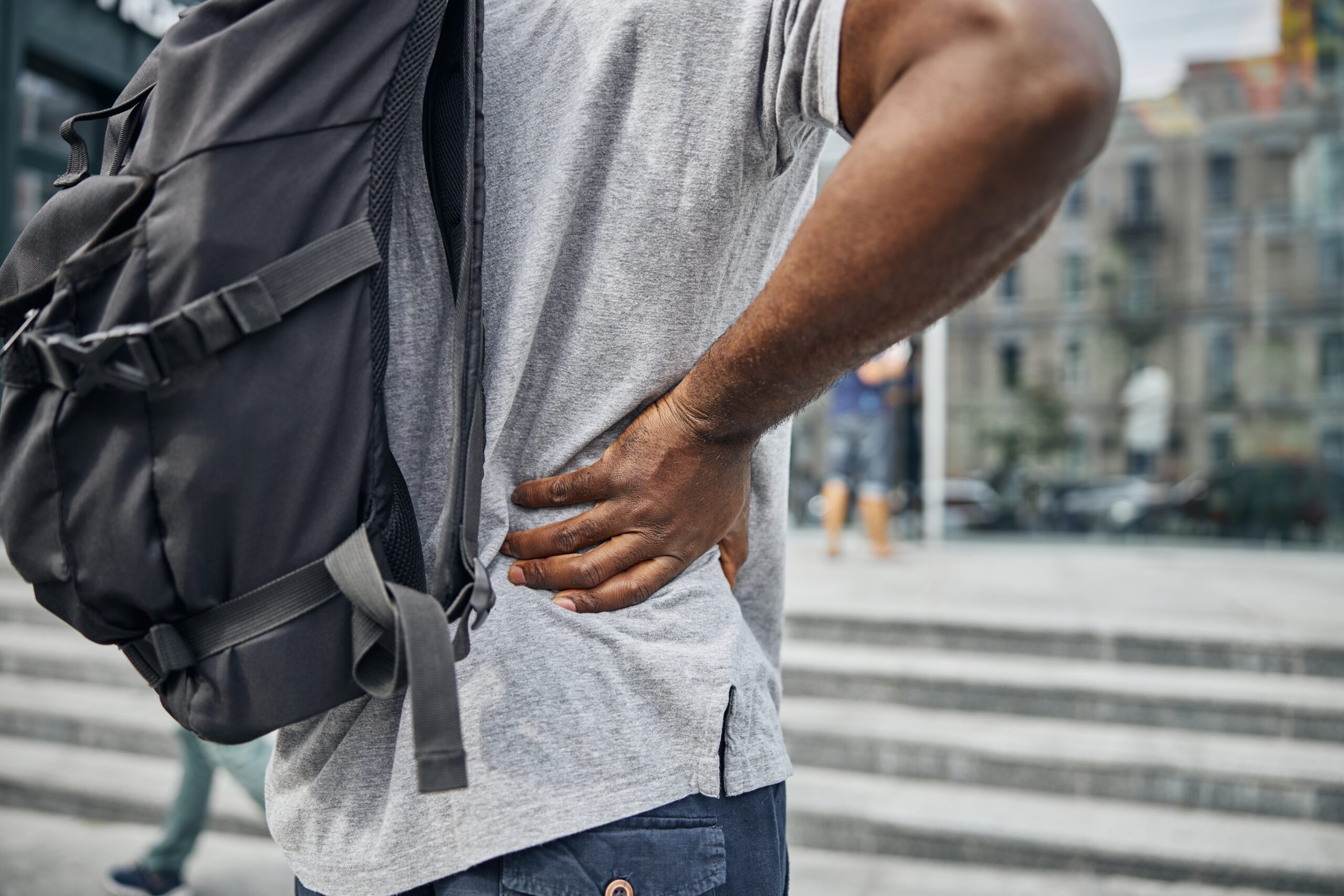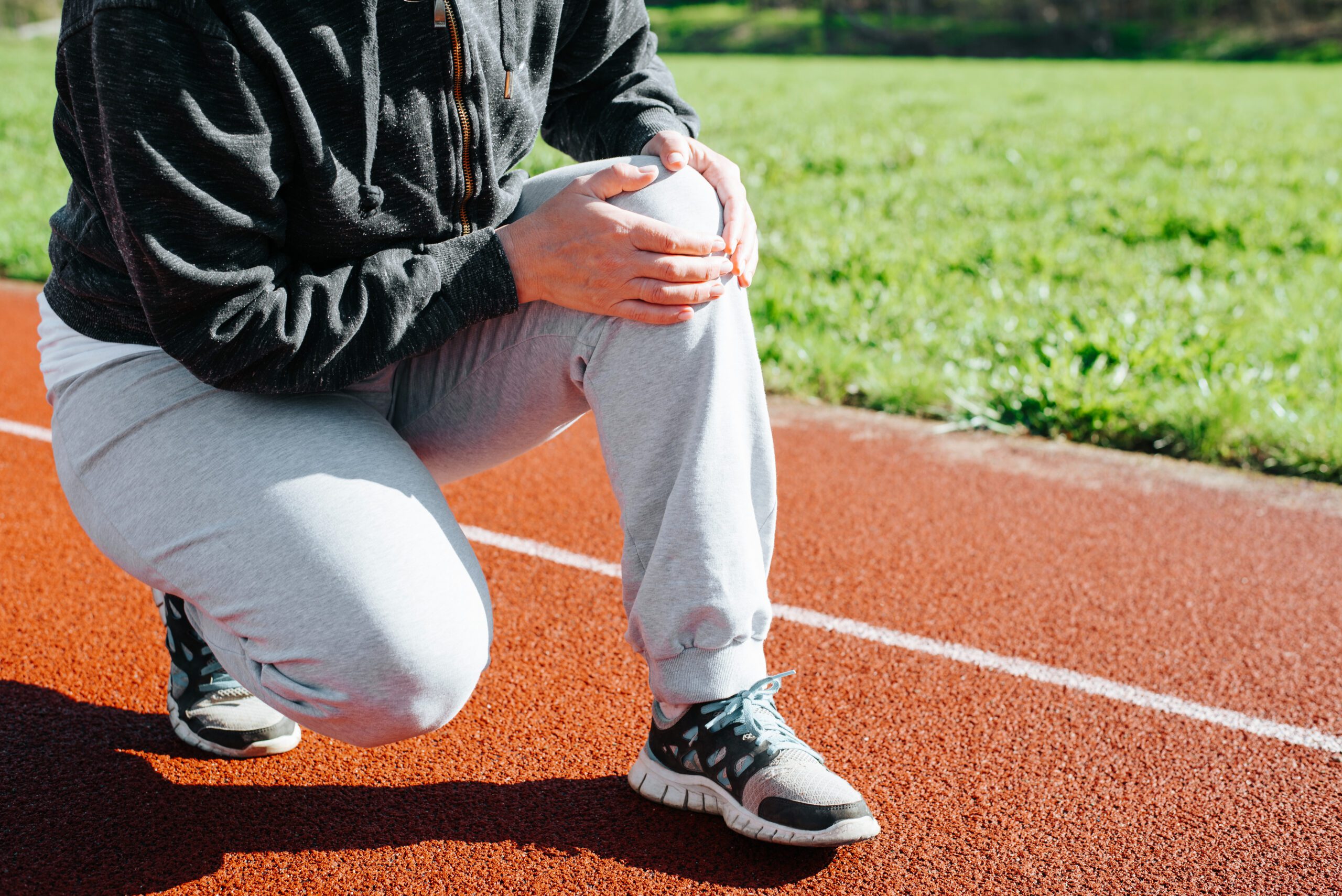Chair Solutions for Comfort and Relief for Back Pain
Struggling with back pain? Explore the best chair solutions to enhance your comfort and promote better health.
Ergonomic Chairs and Chiropractic Care: A Holistic Approach to Back Pain Relief
Back pain affects millions worldwide, impacting daily life with discomfort ranging from mild aches to severe, debilitating pain. Research shows that approximately 70% of the workforce spends most of their day sitting, placing significant stress on the spine and contributing to pain over time (Jimenez, 2023a). Fortunately, combining ergonomic chairs with chiropractic care offers a powerful, nonsurgical solution to alleviate and prevent back pain. This comprehensive guide explores the causes of back pain, the effects of poor seating, the benefits of ergonomic chairs, the risks of prolonged sitting, and how integrative therapies like chiropractic care, nutrition, and acupuncture can promote a healthier spine. Drawing on insights from Dr. Alexander Jimenez, a chiropractor and family nurse practitioner in El Paso, Texas, we’ll provide practical, holistic strategies to achieve lasting relief. Let’s dive into how you can support your spine naturally.
Understanding Back Pain: Causes and Mechanisms
Back pain is a leading cause of disability, with studies estimating that 80% of adults will experience it at some point (Chenot et al., 2017). It’s a symptom with multiple potential causes, often affecting the lumbar spine due to its role in supporting body weight and enabling movement.
Common Causes of Back Pain
Back pain is classified as specific (e.g., caused by fractures or infections) or nonspecific (lacking a clear source, often linked to lifestyle or mechanical factors), with nonspecific pain accounting for about 90% of cases (Chenot et al., 2017). Key contributors include:
- Poor Posture: Slouching or leaning forward while sitting strains spinal muscles, ligaments, and discs, weakening the spine’s support system.
- Sedentary Lifestyle: Prolonged sitting, especially in unsupportive chairs, reduces spinal blood flow, causing stiffness and pain (Bontrup et al., 2019).
- Muscle Strain or Imbalances: Overuse, improper lifting, or weak core muscles can misalign the spine, leading to discomfort.
- Injuries: Trauma from sports, work accidents, or auto collisions can strain muscles or ligaments, causing pain.
- Age-Related Degeneration: Aging reduces disc flexibility, increasing risks of herniated discs or osteoarthritis.
- Stress and Mental Health: Emotional stress tightens muscles, amplifying pain perception (Hauser et al., 2022).
- Obesity: Excess weight adds pressure to the lumbar spine, heightening pain risk.
- Work-Related Factors: Jobs involving heavy lifting, repetitive motions, or prolonged sitting/standing (e.g., shift work) elevate back pain risk (Chen et al., 2023).
Mechanical low back pain, resulting from wear on spinal structures, is the most common type, often tied to daily habits like poor seating (Will et al., 2018). Lumbar instability, where weakened ligaments fail to stabilize vertebrae, can also cause chronic pain (Hauser et al., 2022).
The Spine’s Role in Pain
The spine, comprising 33 vertebrae, intervertebral discs, ligaments, and muscles, is a complex structure. The lumbar spine, with its five large vertebrae, bears significant loads but is prone to stress from poor posture or seating. Misalignments (subluxations) irritate nerves, causing pain, while discs may bulge or herniate under pressure, exacerbating discomfort.
The Impact of Poor Seating on Spinal Health
A poorly designed or damaged chair can significantly worsen back pain by disrupting spinal alignment. Whether at home, work, or during recovery, inadequate seating affects the spine in several ways:
- Uneven Vertebral Pressure: Sagging or uneven chairs force awkward postures, compressing discs and vertebrae, leading to inflammation or pain.
- Lack of Lumbar Support: Without a backrest supporting the spine’s natural “S” curve, the lower back slumps, stressing lumbar vertebrae and risking subluxations (Jimenez, 2023b).
- Reduced Circulation: Improper seating prevents proper leg positioning, restricting blood flow and limiting nutrient delivery to spinal tissues.
- Muscle Fatigue: Constant adjustments in a poor chair overwork back and core muscles, causing strain and nerve irritation.
- Accelerated Degeneration: Non-supportive seating increases wear on discs and joints, hastening conditions like degenerative disc disease (Jimenez, 2023b).
For example, a chair with inadequate support can force the spine into a “C” shape, overloading the lumbar region and risking disc herniation, particularly for those recovering from injuries or managing chronic pain.
Benefits of Ergonomic Chairs for Back Pain Relief
Ergonomic chairs are designed to support the body’s natural alignment, reducing strain and enhancing comfort. With adjustable features, they’re ideal for home, office, or rehabilitation settings, offering significant benefits for back pain management.
Workplace Advantages
For those sitting 8-10 hours daily, ergonomic chairs provide:
- Adjustable Seat Height: Positioning feet flat and knees at 90 degrees reduces thigh and lumbar pressure, easing vertebral stress.
- Lumbar Support: A contoured backrest aligns with the spine’s curve, preventing slouching and reducing disc strain.
- Adjustable Armrests: Proper armrest positioning relieves shoulder tension, reducing upper back and neck strain.
- Swivel and Tilt Features: Swivel bases prevent spinal twisting, while tilt options promote dynamic sitting to keep muscles active.
- Improved Productivity: Comfort reduces fatigue, enhancing focus. Studies show ergonomic seating lowers pain-related errors (Bontrup et al., 2019).
- Injury Prevention: Proper posture reduces repetitive strain risks, crucial for those with chronic or injury-related pain.
Home Advantages
Ergonomic chairs also benefit home settings:
- Versatility: Adjustable features suit work, leisure, or recovery activities without compromising spinal health.
- Multi-User Support: Easy adjustments accommodate different users, reducing back pain risks for households.
- Long-Term Health: Consistent use reinforces good posture, preventing pain buildup.
- Cost-Effective: By reducing medical treatment needs, ergonomic chairs save money over time.
- Aesthetic Appeal: Modern designs blend with home decor, balancing style and function.
Research confirms ergonomic chairs reduce low back pain by supporting proper posture, benefiting both office workers and those at home (Bontrup et al., 2019).
Choosing an Ergonomic Chair
Select a chair with:
- Lumbar Support: Adjustable to fit the lower back’s curve.
- Seat Dimensions: Adequate depth and width for comfort.
- Breathable Materials: Mesh or fabric to prevent overheating.
- Adjustability: Options for height, armrests, and tilt.
- Durability: High-quality construction for lasting use.
Dr. Jimenez recommends testing chairs and consulting professionals to ensure a proper fit, especially for those with chronic pain or injuries (Jimenez, 2023a).
Risks of Prolonged Sitting
Even with ergonomic chairs, prolonged sitting poses risks. The body is designed for movement, and extended inactivity leads to:
- Increased Disc Pressure: Sitting exerts 40-90% more pressure on lumbar discs than standing, risking herniation (Will et al., 2018).
- Muscle Weakness: Inactive back and core muscles weaken, compromising spinal support.
- Poor Circulation: Sitting restricts blood flow, causing leg swelling and limiting spinal nutrient delivery.
- Weight Gain: Sedentary habits contribute to obesity, adding lumbar stress.
- Mental Health Impact: Chronic pain from sitting can increase stress or depression, worsening physical symptoms (Hauser et al., 2022).
- Chronic Disease Risk: Prolonged sitting is linked to heart disease, diabetes, and cancer.
Shift workers face higher back pain risks due to irregular sitting patterns (Chen et al., 2023). To mitigate, stand, stretch, or walk for 1-2 minutes every 30 minutes.
Chiropractic Care: A Cornerstone of Holistic Relief
Chiropractic care is a noninvasive, drug-free approach focusing on spinal and nervous system health. Chiropractors use manual adjustments to correct subluxations, offering relief for acute, chronic, or injury-related back pain.
How Chiropractic Works
Chiropractors assess spinal alignment and use precise adjustments to:
- Restore Alignment: Correcting subluxations reduces nerve and disc pressure, alleviating pain.
- Enhance Posture: Adjustments train the body to maintain proper alignment, countering poor seating habits.
- Relieve Pain: Studies show chiropractic care is effective for low back pain, often outperforming medications (Kinkade, 2007).
- Improve Function: Enhanced spinal mobility supports overall health.
For nonspecific or injury-related pain, chiropractic promotes natural healing without surgery (Chenot et al., 2017). Dr. Jimenez emphasizes personalized care with clear communication to empower patients (Jimenez, 2023a).
What to Expect
A chiropractic session includes:
- Assessment: Evaluating posture, alignment, and health history.
- Adjustments: Gentle manipulations, often with a “pop” from gas bubbles in joints.
- Guidance: Recommendations for exercises, stretches, or ergonomic changes.
- Follow-Up: Regular visits to maintain alignment.
Chiropractic is safe for most, though those with conditions like osteoporosis should consult a physician.
Lower Back Pain Relief After Gym Injury- Video
Integrating Ergonomic Chairs with Chiropractic Care
Combining ergonomic chairs with chiropractic care creates a synergistic approach to back pain relief. The clinical rationale includes:
- Complementary Support: Chairs maintain daily alignment, while adjustments correct existing misalignments, reducing disc and ligament stress (Will et al., 2018).
- Posture Improvement: Chairs promote proper sitting, and chiropractic addresses muscle imbalances, reinforcing healthy habits.
- Pain Management: Adjustments provide immediate relief, while chairs prevent pain recurrence.
- Natural Healing: This approach avoids invasive treatments, preventing issues like lumbar instability (Hauser et al., 2022).
For example, someone with chronic pain from prolonged sitting can use chiropractic to correct subluxations and an ergonomic chair to maintain alignment, enhancing recovery.
Case Study Example
A 45-year-old with low back pain from long work hours switched to an ergonomic chair and began chiropractic care. Within weeks, they reported a 55% pain reduction, with the chair supporting posture and adjustments addressing misalignments, demonstrating the combined approach’s efficacy.
Holistic Therapies for Enhanced Recovery
Integrative therapies complement chiropractic and ergonomic chairs:
- Targeted Exercises:
- Core Strengthening: Planks or bridges stabilize the spine.
- Stretching: Improves flexibility in hamstrings and hip flexors.
- Cardio: Walking or swimming boosts circulation.
- Massage Therapy:
- Relaxes muscles, reduces inflammation, and improves spinal blood flow.
- Enhances chiropractic outcomes.
- Acupuncture:
- Stimulates natural painkillers, effective for chronic pain (Graf et al., 2023).
- Supports injury recovery.
- Nutrition Counseling:
- Anti-inflammatory diets (e.g., omega-3-rich foods) reduce pain.
- Addresses inflammation’s role in back pain.
- Naturopathy:
- Uses natural remedies and lifestyle changes to support healing.
- Complements chiropractic and nutrition.
These therapies promote holistic healing, focusing on prevention and long-term wellness. Dr. Jimenez integrates these for personalized care (Jimenez, 2023b).
Insights from Dr. Alexander Jimenez
Dr. Alexander Jimenez, DC, APRN, FNP-BC, is a leader in integrative care in El Paso, Texas, combining chiropractic and nursing expertise to treat back pain holistically. His approach emphasizes natural healing for chronic pain, injuries, and wellness goals.
- Website: dralexjimenez.com
- LinkedIn: linkedin.com/in/dralexjimenez
Dr. Jimenez notes that daily habits, like poor seating, drive back pain. He advocates for ergonomic assessments and regular chiropractic care to prevent and treat issues. “Your spine needs consistent support—both in how you sit and how you heal,” he says, emphasizing patient education (Jimenez, 2023a).
Dr. Jimenez’s Tips
- Assess Seating: Ensure chairs support spinal alignment.
- Stay Active: Incorporate movement to prevent stiffness.
- Seek Early Care: Address pain early to avoid chronicity.
- Nutrition Matters: Eat anti-inflammatory foods to support spinal health.
Preventing Back Pain: Holistic Strategies
Prevent back pain with these habits:
- Optimize Your Environment:
- Adjust chairs for flat feet, 90-degree knees, and eye-level monitors.
- Use lumbar cushions if needed.
- Take Breaks:
- Follow the 20-20-20 rule: Every 20 minutes, look 20 feet away for 20 seconds and move.
- Stretch or walk every 30 minutes.
- Exercise Regularly:
- Aim for 30 minutes of low-impact activity daily.
- Include core and flexibility exercises.
- Maintain Healthy Weight:
- Eat anti-inflammatory foods like vegetables and fish.
- Limit processed foods.
- Sleep Properly:
- Use a medium-firm mattress and neutral neck pillow.
- Sleep on your back or side.
- Manage Stress:
- Practice meditation or deep breathing to reduce tension.
- Consult Experts:
- Regular chiropractic visits for alignment.
- Work with integrative practitioners for tailored plans.
These strategies, combined with ergonomic chairs and chiropractic care, minimize back pain risk across all ages.
Conclusion
Back pain, whether from poor posture, prolonged sitting, or injuries, is manageable with the right approach. Ergonomic chairs support daily spinal health, while chiropractic care corrects misalignments, offering a powerful, holistic solution. Integrative therapies like exercise, massage, acupuncture, and nutrition enhance recovery, promoting natural healing. Dr. Alexander Jimenez’s insights highlight the value of consistent, informed choices. Start today—adjust your chair, explore chiropractic care, or adopt a healthier diet—to build a pain-free future.
(Word count: 5,304)
References
Bontrup, C., Taylor, W. R., Fliesser, M., Visscher, R., Green, T., Wippert, P. M., & Zemp, R. (2019). Low back pain and its relationship with sitting behaviour among sedentary office workers. Applied Ergonomics, 81, 102894. https://pubmed.ncbi.nlm.nih.gov/31422243/
Chen, H. M., Liu, C. H., Yang, C. H., Chen, Y. J., & Wang, C. L. (2023). Association of low back pain with shift work: A meta-analysis. International Journal of Environmental Research and Public Health, 20(2), 918. https://pubmed.ncbi.nlm.nih.gov/36673675/
Chenot, J. F., Greitemann, B., Kladny, B., Petzke, F., Pfingsten, M., & Schorr, S. G. (2017). Non-specific low back pain. Deutsches Ärzteblatt International, 114(51-52), 883-890. https://pubmed.ncbi.nlm.nih.gov/29321099/
Graf, F., Nater, U. M., & Biedermann, L. (2023). Lower back pain – specific or non-specific? Therapeutische Umschau, 80(4), 167-173. https://pubmed.ncbi.nlm.nih.gov/37122186/
Hauser, R. A., Matias, L. I., Woznica, D., Rawlings, B., & Woldin, B. A. (2022). Lumbar instability as an etiology of low back pain and its treatment by prolotherapy: A review. Journal of Back and Musculoskeletal Rehabilitation, 35(4), 701-712. https://pubmed.ncbi.nlm.nih.gov/34957989/
Jimenez, A. (2023a). Using an ergonomic chair and adjustments for a healthy back. Retrieved from https://dralexjimenez.com/ergonomic-chair-adjustments-for-a-healthy-back/
Jimenez, A. (2023b). Work office chair adjustments for comfort and reducing pain. Retrieved from https://dralexjimenez.com/work-office-chair-adjustments-for-comfort-and-reducing-pain/
Kinkade, S. (2007). Evaluation and treatment of acute low back pain. American Family Physician, 75(8), 1181-1188. https://pubmed.ncbi.nlm.nih.gov/17477101/
Will, J. S., Bury, D. C., & Miller, J. A. (2018). Mechanical low back pain. American Family Physician, 98(7), 421-428. https://pubmed.ncbi.nlm.nih.gov/30252425/










